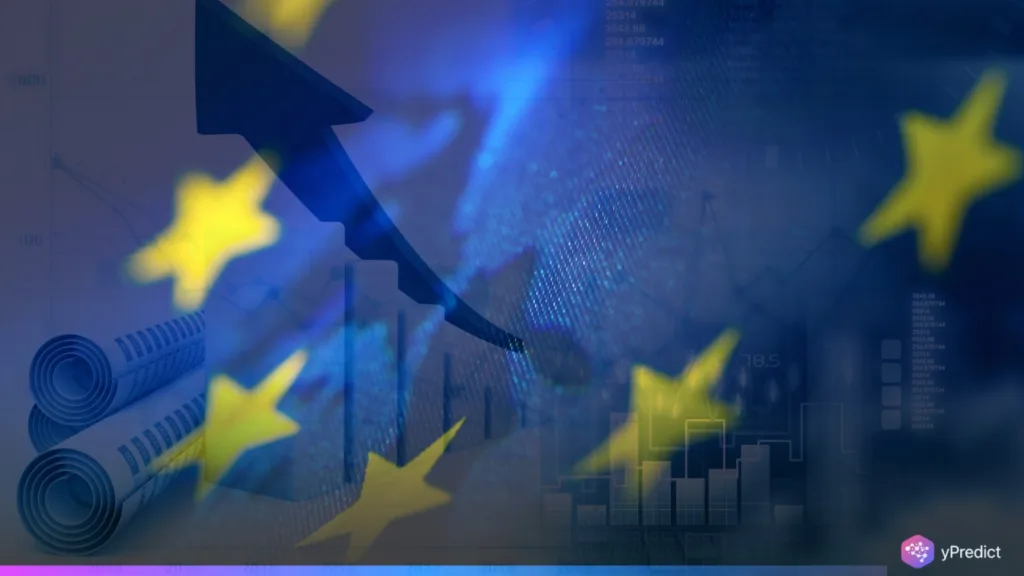
European stocks opened up +0.82% on August 6, 2025, and displayed bullish investor sentiment across the region. Bloomberg noted that this was timely, following a favorable shift in market sentiment, with investors keenly focused on earnings and tariff developments. AI-powered trading desks flagged the rise early, driven by a mix of fiscal responses, geopolitical restraint, and machine-tracked market behavior. The uptick wasn’t just random—it marked a pattern AI models have been monitoring since Q2, now intensified by macro-level trade events and corporate performance updates.
AI Identifies Positive Signals in Earnings Season
The ongoing earnings season across Europe has delivered enough momentum to push indices higher, and AI systems were among the first to register the shift. Leading AI sentiment tools filtered quarterly results from key sectors—finance, energy, and consumer goods—and detected a rising probability of positive market reactions. European stocks moved accordingly. The models picked up on above-expected EPS figures and accelerated share buybacks, feeding directly into algorithmic buy signals.
This explains the synchronized spike across the FTSE, DAX, and CAC indices. Investor focus, amplified by AI parsing earnings call transcripts in real-time, leaned toward profitability outlooks. Natural language processing tools flagged confidence in forward guidance, helping bots recommend entry points just before the intraday rally began.
Trump Tariff Reactions Stay Measured, AI Flags Stability
The latest tariff news around Trump’s proposed duties on EU imports stirred market anxiety, but AI models labeled the reaction as “mildly volatile.” Economic analysts from the think tank Bruegel offered early insight that the proposed tariffs would have a manageable short-term impact, which AI sentiment trackers instantly incorporated into trading logic.
AI tools assessed not only the tariff figures but also EU policymakers’ responses. They picked up signals of ongoing diplomatic engagements and internal EU fiscal measures aimed at counterbalancing the tariffs. As a result, sell signals remained low across automated platforms. AI pattern recognition suggested that market participants saw the tariff announcement as more political posturing than an actionable threat.
Diplomatic Signals and Policy Adjustments Stabilize Models
AI also captured subtle cues from diplomatic and trade data feeds. The European Commission’s 2024 report, still monitored by machine systems, noted the suspension of retaliatory tariffs—a key flag in algorithmic trading models. These developments triggered model recalibrations from volatility to consolidation.
Investors directed attention to these actions, and the AI dashboards flagged decreased downside risk. The machine learning models re-estimated fair values for affected sectors, most notably automotive and industrials, and recalibrated short-term expectations for volatility metrics. This recalibration contributed to sustained buying pressure in European stocks by midday trading.
AI Models Maintain Bullish Bias as Market Holds Gains
By late afternoon on August 6, AI-powered bots maintained a bullish stance. News sentiment scores across Bloomberg terminals stayed positive, largely due to stable macro signals and earnings optimism. Tariff news failed to override the broader bullish data fed into AI systems. AI tools tracked capital flows shifting into European ETFs and low-volatility equities—another indicator of measured optimism.
AI-driven market systems played a pivotal role in today’s 0.82% uptick in European stocks. Investor focus sharpened around two core signals: better-than-expected earnings and manageable tariff risk. With sentiment tracking, fiscal policy input, and NLP-parsed central bank cues factored in, machine-led trades outpaced human responses. The data shows that while tariff news remains in the headlines, AI models have aligned more with earnings strength and policy moderation.







